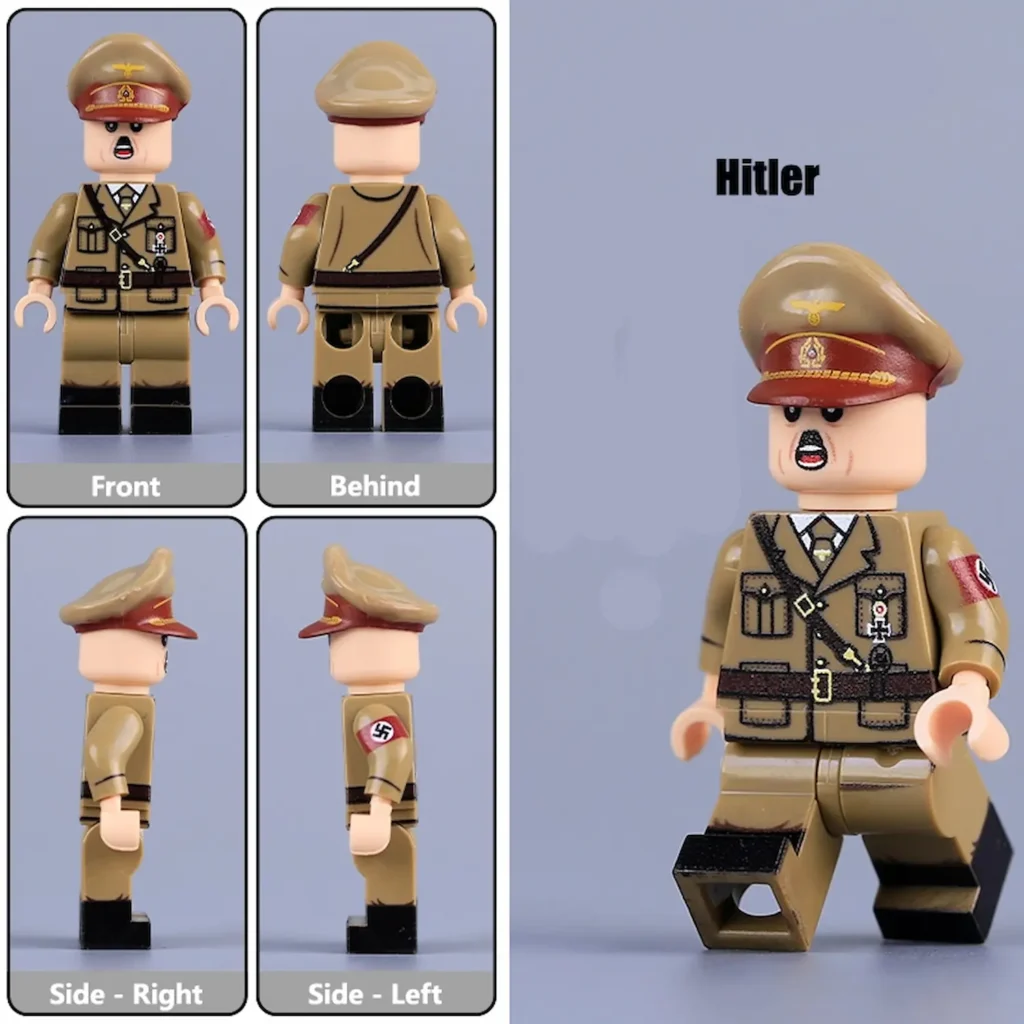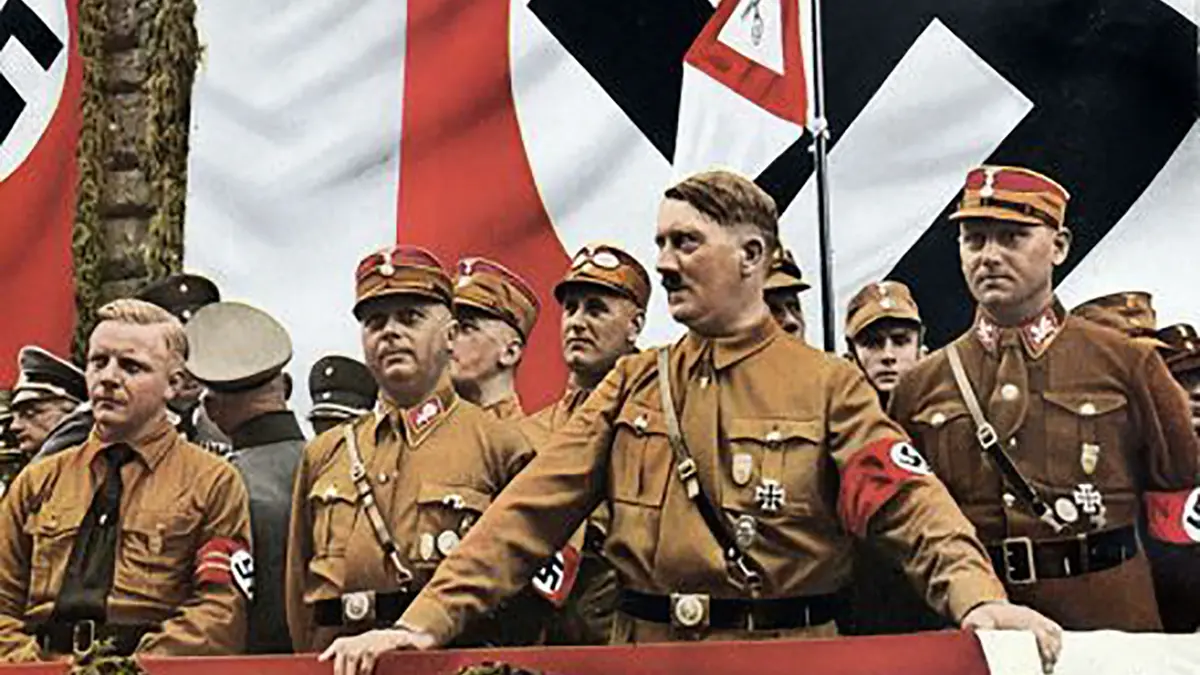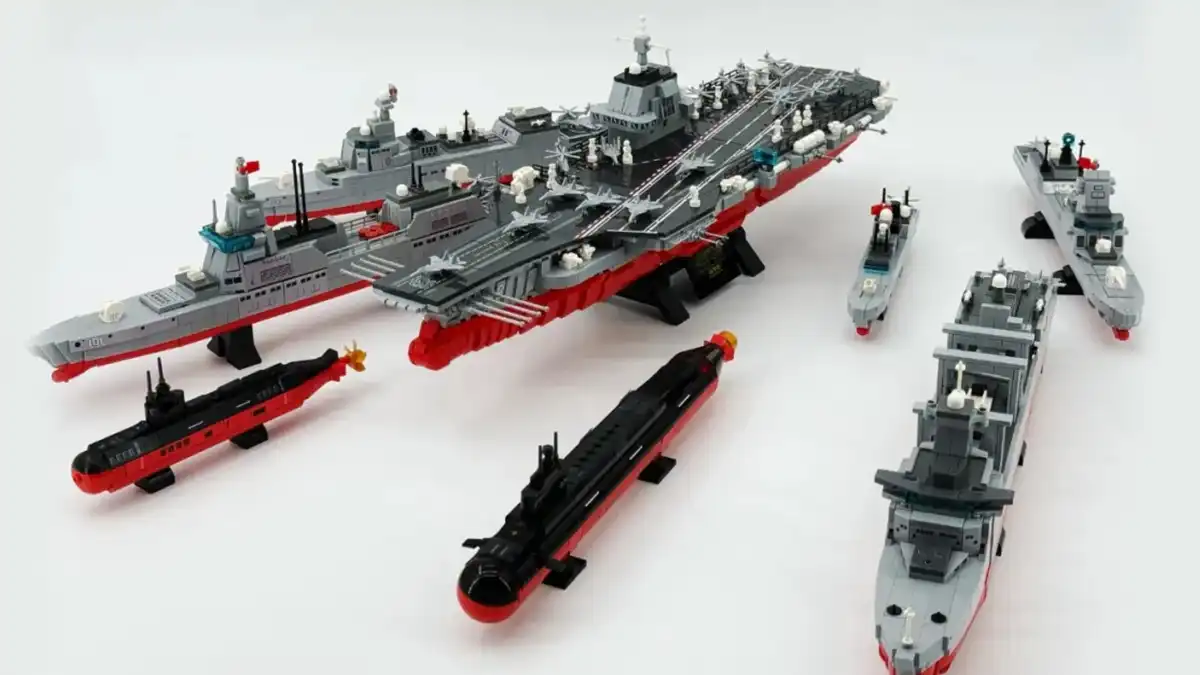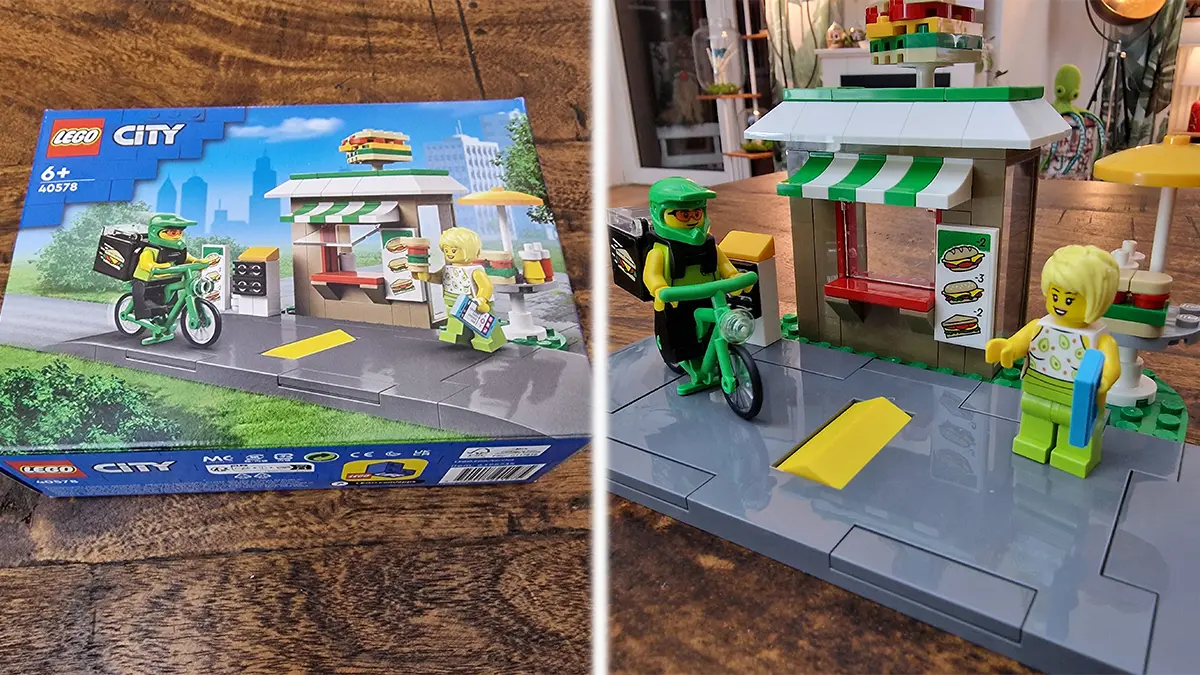Table of contents
- Minifigure – Adolf Hitler with a brown uniform and cap
- The Story Behind Hitler’s “Brownshirt” Look
- The Accidental “Brownshirt”
- The Cap: A Symbol of Party Over State
- The “Humble Soldier” Myth: The Medals
- The Accessories of Authority (and Irony)
- The Big Switch: Why This Uniform Vanished in 1939
- At a Glance: “Party” Look vs. “Warlord” Look
- The Takeaway
Hey everyone! A lot of friends have been really interested in our “Adolf Hitler in the Brownshirt uniform” minifigure lately. So today, I’ve written this special post to talk a bit about the historical background and inspiration we used to make it.
Also, if I write any review roundup posts down the line that fit with this minifigure’s theme, I’ll be sure to link them here. Those articles will have super-detailed photo guides, and I’ll also be recommending posts from other friends in the community who have reviewed these toys!
Let’s dive right in!
If you’d like a deeper understanding of Adolf Hitler, you can also check out this article.
Minifigure – Adolf Hitler with a brown uniform and cap
Click here to check the product

This figure wears the official brown shirt uniform of the Nazi Party (NSDAP), which became famous as the uniform of the SA, or “Brownshirts.”
As the party’s Führer (Leader), Adolf Hitler wore this political uniform frequently during his rise to power in the 1920s and 1930s to symbolize his leadership of the movement, before later adopting military-style gray uniforms during World War II.
Before we get into the history, take a look at the Adolf Hitler figures we have here. They are incredibly faithful recreations. The different uniforms and styles show him at different points in time, which actually makes it easier to get a better grasp of this historical figure.
The Story Behind Hitler’s “Brownshirt” Look
You’ve seen the pictures. You’ve seen the pictures. The tan-colored uniform, the visored cap, the stark red, white, and black armband. It’s the “look” that became synonymous with Adolf Hitler during the 1930s. But have you ever stopped to think about what it all means?
That outfit, as seen in the images, isn’t actually a military uniform. It’s his formal political uniform as Führer und Reichskanzler (Leader and Reich Chancellor). This was his standard day-wear for party functions, especially the massive, theatrical Nuremberg Rallies.
It was, fundamentally, a propaganda tool. Every single piece—from the color to the medals—was deliberately chosen to construct a powerful public image.
So, let’s deconstruct this “look,” piece by piece, and uncover the history behind it.
The Accidental “Brownshirt”
The most famous part of the early Nazi movement was its nickname: the “Brownshirts.” This name came from the Sturmabteilung (SA), or Storm Troopers, the party’s violent paramilitary wing founded in 1921. They were the party’s thugs, tasked with protecting Nazi rallies and violently breaking up the meetings of their political opponents.
But here’s the fascinating bit of history: the brown color wasn’t an ideological choice. It was a bargain-bin find.
The early Nazi Party was broke. In 1921, a German Freikorps (paramilitary) leader named Gerhard Roßbach bought a massive surplus stockpile of durable, brown denim shirts. These were the so-called “Lettow-shirts,” originally intended for German colonial troops in East Africa during World War I, but they never made it there due to the Allied blockade. The SA, needing a cheap uniform, snapped up this stock. The color stuck, and “Brownshirt” became a name synonymous with revolutionary force.
The uniform in the picture is the evolution of that simple shirt. Around 1930, it was formalized into a tan/brown jacket and trousers for the party’s Politischer Leiter (Political Leaders). As Führer, Hitler wore this as the supreme Political Leader.
The Cap: A Symbol of Party Over State
Next, look at the visored cap, or Schirmmütze. It’s made of the same tan fabric and features two crucial emblems.
- The Eagle: The top emblem is the Parteiadler (Party Eagle), a stylized eagle gripping a swastika. In 1934, this party symbol was ordered to be worn on all military uniforms, a huge visual statement that the Party now controlled the traditional army.
- The Cockade: Below the eagle is the national cockade, or pin, set in a gold wreath. After taking power, Hitler immediately restored the old Imperial German colors (black-white-red), ditching the colors of the Weimar Republic. That’s what you see in the cockade.
The arrangement is the real story. The Party Eagle is placed above the National Cockade. This visual hierarchy was no accident. It was a blunt, symbolic declaration that the Nazi Party was the supreme authority, “on top of” the traditional German state.
(A small footnote: Hitler’s personal cap had an extra-long visor. He was reportedly very sensitive to bright lights—a side effect from a WWI mustard gas attack—and used the long visor to shield his eyes during rallies.)
The “Humble Soldier” Myth: The Medals
Now, look at the medals on his left breast pocket. Or rather, the lack of them.
While other Nazi leaders (like Hermann Göring) covered themselves in flashy awards, Hitler was a master of propaganda. He intentionally wore only a very specific, modest set of three decorations.
Why? He was crafting an image. He wanted to be seen as the “humble Gefreiter” (lance-corporal) , a simple frontline soldier and an “Old Fighter” of the party. It was a look designed to project modesty and shared sacrifice.
These are the only three awards he wore:
- The Iron Cross, First Class: This was his prized possession from WWI, awarded in 1918. It was a very high honor for an enlisted man of his rank , and it was the cornerstone of his “brave soldier” persona. (The fact that it was recommended by a Jewish adjutant, Hugo Gutmann, was a detail that was… suppressed.)
- The Wound Badge in Black: This was awarded in 1918 for being wounded in action. The black class was the lowest, given for being wounded once or twice. This was his “proof” of sacrifice.
- The Golden Party Badge: (Not clear on the minifigure, but worn in real life). This was for the “Old Guard,” the first 100,000 party members. This badge was crucial, as it signaled he was the movement’s founder, not someone who joined after it became powerful.
The Accessories of Authority (and Irony)
Two final pieces complete the look: the armband and the belt.
The Swastika Armband (Hakenkreuzarmbinde) is the most potent symbol. Its official name was the Kampfbinde (battle armband). This is what definitively marks this as a Party uniform. The regular army (Wehrmacht) had the eagle on their tunics, but they did not wear the swastika armband. This was a political statement.
And now for the great irony: the belt. That distinctive leather belt with the cross-strap? It’s a “Sam Browne” belt.
In a regime obsessed with pure German nationalism, their key symbol of authority was a British invention. It was designed by a 19th-century British Indian Army officer, Sir Samuel J. Browne, who needed the cross-strap to support his sword after losing an arm in combat. The Nazis—along with other fascists —appropriated it for one reason: it was an internationally recognized symbol of military, officer-class authority. It made their political movement look legitimate and professional.
The Big Switch: Why This Uniform Vanished in 1939
This brown uniform had a very specific time and place. It was the pre-war uniform, the attire of the Party Leader presiding over propaganda events like the Nuremberg Rallies.
Then, on September 1, 1939, the day Germany invaded Poland, Hitler made a very public and deliberate “wardrobe change.”
He addressed the Reichstag and announced he had put on the “coat of the soldier”—the military Feldgrau (field-grey)—and would not take it off until victory. This act symbolically transformed him. He was no longer just the Party Leader (in brown); he was now the Supreme Warlord (in grey).
From that day until his death, Hitler exclusively wore his new, custom field-grey uniform. And this new uniform had critical differences:
- It had no swastika armband. The Party symbol was gone, replaced by the symbol of the State at War.
- It had no rank insignia. As Führer, he was above all ranks.
- He wore the exact same three “humble” decorations.
At a Glance: “Party” Look vs. “Warlord” Look
| Feature | NSDAP Political Uniform (Pre-1939) (The “Brownshirt” Look) | Wartime “Warlord” Uniform (1939-1945) |
| Primary Color | Tan / Brown | Field-Grey (Feldgrau) |
| Symbolic Persona | Führer as Party Leader | Führer as Supreme Warlord (“First Soldier”) |
| Tunic Style | Single-breasted tunic/jacket | Often a custom double-breasted jacket |
| Trousers | Matching Tan/Brown or Black | Almost exclusively Black |
| Key Accessory | Swastika Armband (Hakenkreuzarmbinde) | No Armband |
| Belt | Leather Sam Browne Belt (cross-strap) | Simple leather belt, or often no belt |
| Decorations | Iron Cross 1st Class, Wound Badge (Black), Golden Party Badge | Identical Set: Iron Cross 1st Class, Wound Badge (Black), Golden Party Badge |
| Primary Context | Party functions, Nuremberg Rallies | Often, a custom double-breasted jacket |
The Takeaway
So, the next time you see that “look,” you’ll know it’s not just a uniform. It’s a meticulously crafted costume. It was a propaganda construct designed to send a very specific and very powerful message.
It blended the revolutionary violence of the SA’s brown color, the borrowed legitimacy of a British officer’s belt, the manufactured persona of a humble, decorated soldier, and the totalitarian claim of the Party’s supremacy over all. It was the “look” of the political Führer, an image he immediately discarded for the “look” of the Warlord the moment his political project turned into a world war.
Alright, that’s all for this article for now. Now, I want to hear from you. Do you have any other questions or anything else you’d like to know about Adolf Hitler in this particular uniform? Or, perhaps, are there other specific toys, figures, or similar items of his that you’d like to see? Let me know in the comments section below!






